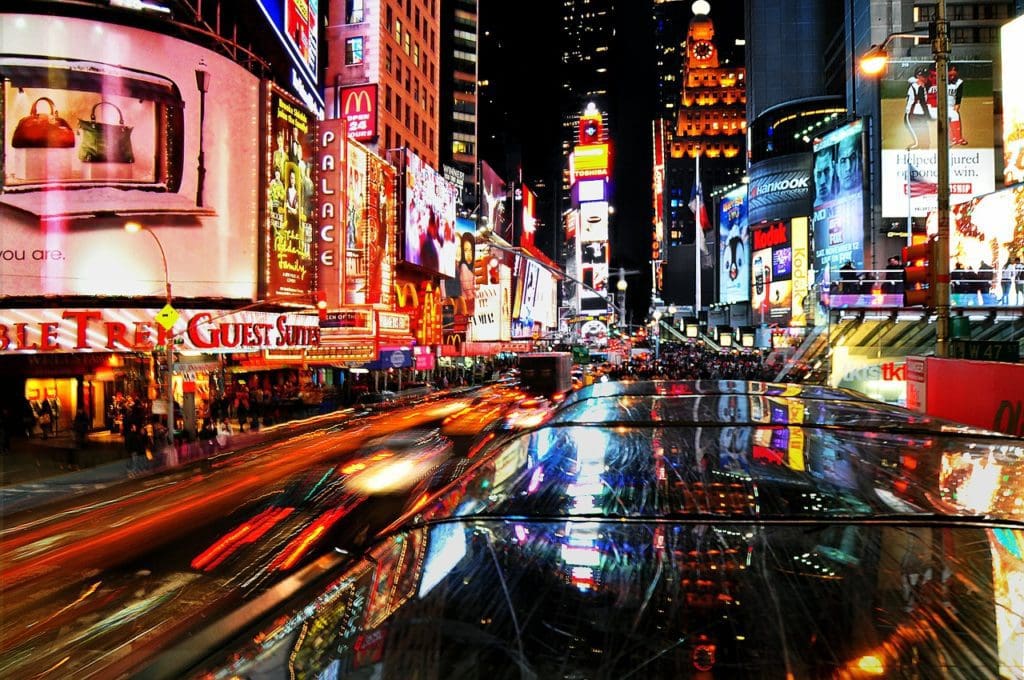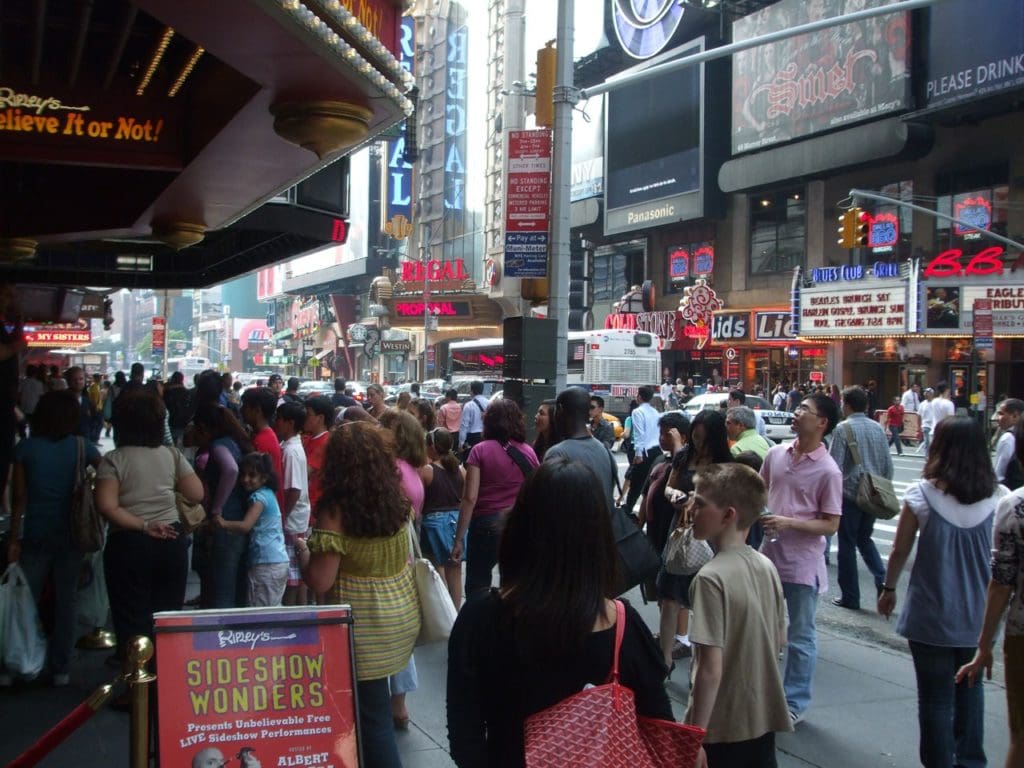 Energetic social chatter abounds as you make your way through the throngs of patrons to your ticketed seat in the historic Broadway theatre. You look to the box seats to see if you can spot a celebrity – or maybe YOU are in a box seat. As the lights go down, the buzz quiets to silence, then the rich red curtain is drawn open to reveal the opening act of the show. This iconic Broadway theatre experience was over 250 years in the making.
Energetic social chatter abounds as you make your way through the throngs of patrons to your ticketed seat in the historic Broadway theatre. You look to the box seats to see if you can spot a celebrity – or maybe YOU are in a box seat. As the lights go down, the buzz quiets to silence, then the rich red curtain is drawn open to reveal the opening act of the show. This iconic Broadway theatre experience was over 250 years in the making.
History of Broadway Theatre
Theatre first became popular in New York in 1750. In those early times, performances were mainly Shakespeare plays and ballad operas. After the Revolutionary War, theatre was more popular than ever and many new theatres opened through the 1820s. During the 1830s and 1840s, blackface minstrel shows became very popular and P.T. Barnum ran an entertainment venue in lower Manhattan.
During the second half of the nineteenth century, Shakespeare plays were back in vogue with notable actors such as Edwin Booth (brother to John Wilkes Booth) performing to great acclaim. While New York’s upper class attended operas, English burlesque hit the New York stage in 1868, offered to appeal to the middle-class audiences. In 1866 the modern day musical debuted with the five and a half hour The Black Crook.
It was about that time that rising downtown real estate prices drove theatres toward the farmland north of lower Manhattan. By 1870, Union Square was the center of Broadway theatre but the migration continued north to cluster around Madison Square by the turn of the century. Broadway theatre established its present-day concentration around Times Square in the early 1900s.
Broadway Theatre in the 20th-Century through Today
 The opening of the first subway in 1904 made Broadway theatre easily accessible and brought rapid growth Theatre District. Throngs of crowds regularly filled the sidewalks, creating a vibrancy and excitement in being part of it. With the advent of electric lights, individual venues began advertising their shows with lighted signs. Since colored bulbs burned out too fast, theatres used white lights throughout the district, giving rise to the nickname “The Great White Way.”
The opening of the first subway in 1904 made Broadway theatre easily accessible and brought rapid growth Theatre District. Throngs of crowds regularly filled the sidewalks, creating a vibrancy and excitement in being part of it. With the advent of electric lights, individual venues began advertising their shows with lighted signs. Since colored bulbs burned out too fast, theatres used white lights throughout the district, giving rise to the nickname “The Great White Way.”
While Broadway theatre itself continued on, the famed Theatre District suffered decades of decline and neglect mid-century, hitting bottom in the 1970s and 1980s. Drug dealers, prostitutes, and pornography were rampant in Times Square. Happily, with both city and private efforts to clean up and revitalize the area, the Great White Way is once more a vibrant and compelling destination.
According to the Broadway League, during the 2016-2017 season, 41 professional theatres grossed nearly $1.45 billion with more than 1.3 billion in attendance. These statistics are proof of the enduring allure and abiding success of Broadway theatre.
To experience the dazzle of the Great White Way yourself, contact a Covington vacation specialist to arrange all the details.







Leave a Reply